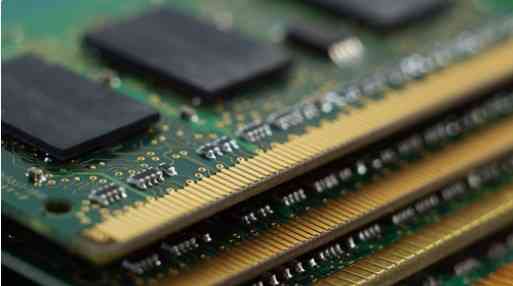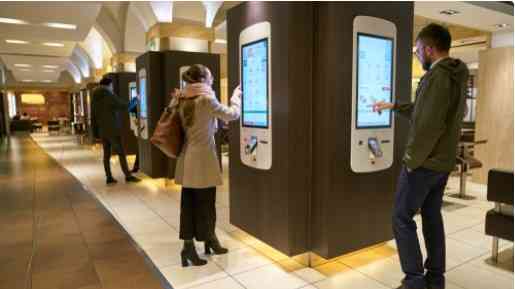Desktop
Overview
A cloud desktop is a cloud computing solution that lets you access your desktop, files, and business apps in the cloud. It allows you to work on any device from anywhere, as long as you have internet connectivity.

Let’s Unpack That
The following key terms help define the cloud desktop by introducing the various tools available through its platform.
Virtual desktop infrastructure (VDI) – a virtualization technique enabling access to a virtualized desktop, which is hosted on a remote service over the Internet. This service is typically built, managed, and maintained by the client. VDI encompasses software, hardware and other resources required for the virtualization of a desktop environment.
Desktop-as-a-service (DaaS) – is a form of virtual desktop infrastructure (VDI) in which the VDI is outsourced and handled by a third party. Also called hosted desktop services, desktop-as-a-service is frequently delivered as a cloud service along with the apps needed for use on the virtual desktop.
Published applications – Published applications are virtual software programs that function as if they were installed locally. Users can access and launch published applications in the same way they do with native applications. IT can deliver published applications to users’ Windows and Linux desktops as well as their mobile devices.
Persistent Desktop – a virtual desktop that can save data and user settings on the operating system. As with older physical desktops with persistent hard drive images, persistent virtual desktops allow users to store their own settings, files and shortcuts on the desktop.
Central processing unit (CPU)– also called a central processor or the main processor is the electronic circuitry within a computer that executes instructions that make up a computer program.
Random access memory (RAM) – A type of data storage used in computers that are generally located on the motherboard. This type of memory is volatile and all information that was stored in RAM is lost when the computer is turned off.
Storage Area Network (SAN) – A specialized, high-speed network that provides block-level network access to storage. SANs are typically composed of hosts, switches, storage elements, and storage devices that are interconnected using a variety of technologies, topologies, and protocols.
Graphics Processing Unit – A programmable logic chip (processor) specialized for display functions. The GPU renders images, animations, and videos for the computer’s screen. GPUs are located on plug-in cards, in a chipset on the motherboard, or in the same chip as the CPU.
Golden Images – A template for a virtual machine (VM), virtual desktop, server or hard disk drive. A golden image may also be referred to as a clone image, master image or base image. To create a golden image, an administrator first sets up the computing environment exactly the way it is needed and then saves the disk image as a pattern for making more copies. The use of golden images can save time and ensure consistency by eliminating the need for repetitive configuration changes and performance tweaks.
Virus – A type of program designed and developed to protect computers from malware like viruses, computer worms, spyware, botnets, rootkits, keyloggers, and such. Antivirus programs function to scan, detect and remove viruses from your computer.
Patches – The process that helps acquire, test, and install multiple patches (code changes) on existing applications and software tools on a computer, enabling systems to stay updated on existing patches and determining which patches are the appropriate ones. Managing patches thus becomes easy and simple.
Two-factor authentication – Sometimes referred to as two-step verification or dual-factor authentication, is a security process in which users provide two different authentication factors to verify themselves. This process is done to better protect both the user’s credentials and the resources the user can access. Major Platforms that our suppliers use for their DaaS services, VMWare Horizon, Citrix Xen Desk, AWS Workspaces, Azure, Windows Virtual Desktop.
Why Choose Desktop?
- Seamlessly integrated with remote workforce and BCDR solutions
- Positively impacts security-conscious companies invested in protecting their data
- Flexibly scales to various needs, whether companies that are acquiring company or seasonal staff
- Reduces operational efficiency costs, allowing IT staff to focus on other projects that directly benefit the business
- Provides instant access to large files

Why Work With Us?

Although the concept of choosing a DaaS cloud service provider may seem simple on the surface, there are many factors to consider, such as:
- The type of desktops
- User descriptions
- Whether your company is interested in a platform or fully managed service
- The applications accessed
We have helped several companies identify their circumstances to properly achieve their goals. Our team is dedicated to working with you to assess your requirements and goals properly. This will help us properly facilitate the right DaaS cloud service providers for the job.
Is Desktop Right for My Organization?
DaaS is a typical conversation that happens within a company’s IT strategy discussions. A lot of these discussions are revolved around:
- Creating better operational efficiencies.
- Implementing speed to deploy desktops.
- Ensuring Security First – Safe way to access data and protecting proprietary information.
- Creating a BYOD environment.
- Acquiring a company and being able to get those workers on your systems in a day.
- Allowing shift workers to share a dump terminal
- Engaging kiosks
- Meeting small IT staff needs, allowing them to be efficient and manage all their desktops from an administration portal
- Supporting a seasonal business model and ensuring employee contact
- Instituting various devices for higher education
- Allowing healthcare professionals to travel to different hospitals
.

Things to Consider

When a company decides to integrate their organization’s desktops into the cloud they must choose whether they want to build it (VDI) or look for a service that has developed a platform (DaaS), which could eliminate a lot of additional CAPAX costs, internal complexities, and end user performance issues.
Things to consider include:
- Do you have an IT organization that can make decisions for the business’s IT Strategy? If not, this will not be a good fit for DaaS
- Why has the business opted for DaaS? If it is to do a comparison with a desktop refresh and no other achievements, this might not be a good fit. For example, mobility and security are common reasons that DaaS would be a good fit.
- Can their IT Organization support this new technology, or will they need help? This includes:
- Desktop Support
- Managing the DaaS platforms
- Image creation
Frequently Asked Questions
It can, but if you try to compare it as apples to apples, you will find that DaaS does not save you money and it is more expensive. You have to include soft costs you’ll eliminating operational duties and physical attributes, (for example, having your staff maintaining the desktop support functionality) and what will your company be gaining (such as allowing your mobile workforce to access corporate systems and data anywhere and very fast).
Extremely. This is because your desktop and data is stored in a data center and not locally. If a particular device were to become compromised, your company’s data is secure and recoverable immediately. You can also administer patches, updates, AV, 2 factor authentication from a centralized portal.
No, you still need to keep your IT organization to help make decisions, understand how everything works. We have seen companies do this in the past and that typically has unintended consequences. But by taking this workload off your IT Staff, they can become more strategic and work on projects that help your company grow.
It all depends on the end user environment and applications they need to access.